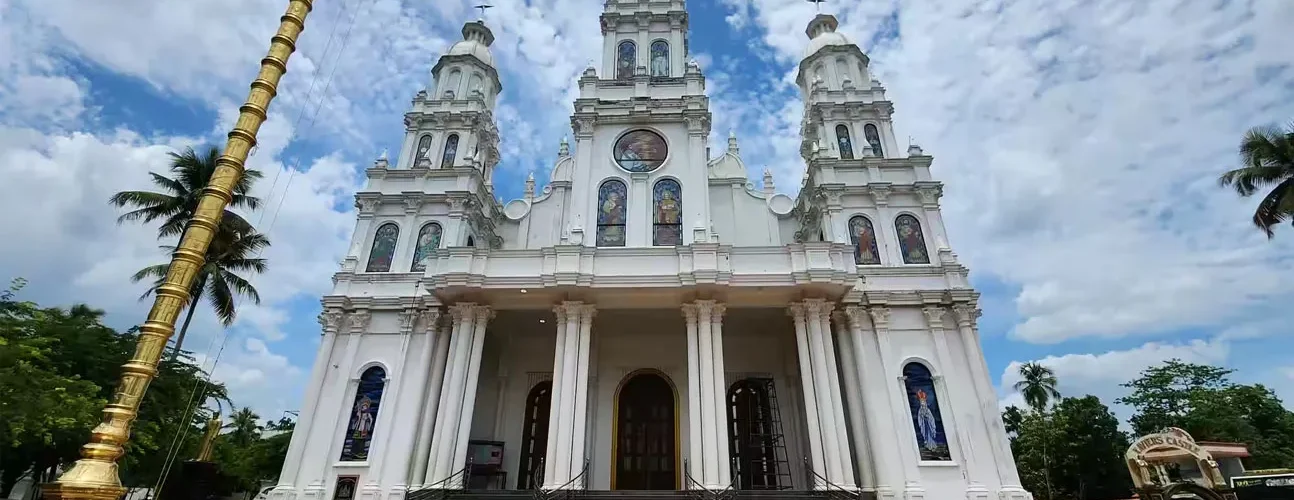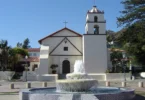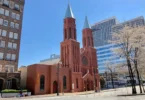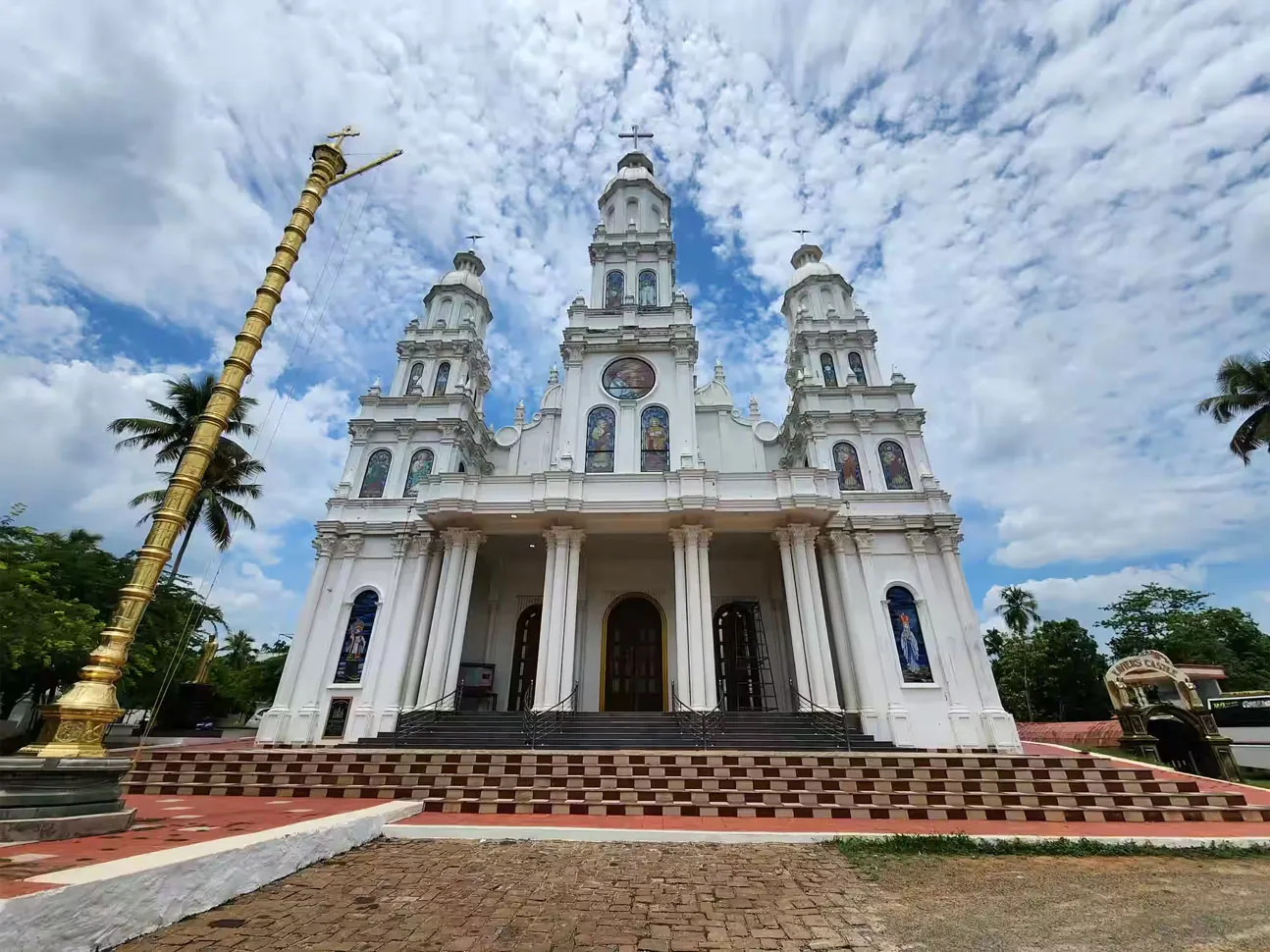
Introduction
Sampaloor Church or St. Francis Xavier’s Church is a Christian church located in Sampalur near Ambazhakad in Katukutty Panchayat of Thrissur district . This church is part of the Latin Catholic Church of the Roman Catholic Church . The church is named after Saint Francis Xavier. Sambalur Church is under Kottapuram Diocese in Varapuzha Archdiocese . This church is situated on the bank of Chalakudy River near Njaralakadav Bridge, 8 km away from Chalakudy .
St. Francis Xavier Church at Vynthala is located in an important centre of the Jesuits priests during the reign of the Portuguese – Sampaloor. The place still contains numerous monuments from that era. They include the St. Paul’s Seminary, the St. Paul’s Monastery and the St. Paul’s Press and a church dedicated to St. Francis Xavier.
Sampaloor, the place where the church is located, had a number of missionary visitors in its history, starting with Francis Xavier, who visited the village first in 1542, followed by two more visits in 1544 and 1548. The name of the village, prior to the arrival of Francis Xavier was Ambazhakad, and the concentration of Jesuit population in the village started in 1600s when they had to flee Kochi after the Dutch asserted their supremacy in Kochi. The Jesuits relocated the St. Paul’s Seminary at Kochi to Ambalakkad and called the place, são(n)-paulo(u)-ur, meaning the land of São Paulo (St. Paul), to honour the memory of Paul the Apostle. Another Catholic saint, John de Britto visited the place, estimated to be in 1673-74, followed by Constantine Joseph Beschi, alternatively known as Veera Mamunyar, an Italian missionary and the author of Thembavani, whose resting place is by the church.
Sampaloor is a quiet village in Thrissur district, hardly eight kilometres from Chalakudy. This was once part of the erstwhile Cochin State, and an important one too. The St. Francis Xavier’s church and the remnants of a seminary and printing press here are evidences of the glorious history of this village and a significant phase in the life of Arnos Paathiri. Unfortunately, these ruins – parts of a wall and the foundation of what was once a major centre of learning – need preservation.
The history of Sampaloor is interwoven with the Saints and Scholars who came to Sampaloor through the waterways which start from Musiris to Mararikulam (a river port where houseboats can anchor). The name Sampaloor derived from the name, St. Paul Oor (means the place of St. Paul). Oor in Tamil language means “place”.
The Jesuit Priests (Society of Jesus) of St. Paul came to India for Missionary works settled at Sampaloor and started their Seminary along with printing press in between 1579 and 1600. The Jesuits named their Seminary, Press and Monastery in the name of St. Paul and in the course of history, the Dutch Protestants and Tipu Sultan destroyed the Seminary, Press and the Monastery. The Blood Sand of St. John De Britto is kept here in the Museum. In the Church, the “Altar” of the old Seminary run by the Jesuit Priests is kept as a monument where St. Francis Xavier, St. John De Britto, Fr. Constantine Beschi and other eminent scholars offered the Holy Mass for the praise of God.
The fame of Sampaloor is connected with the visits of St. Francis Xavier to Sampaloor during his visit to Kerala. There were almost 450 Anglo-Indian families in Sampaloor who were strong devotees of St. Francis Xavier. In this connection Sampaloor is also called “Goa of Kerala”.
Sampaloor, along with the St. Paul Seminary and Printing Press, was a cradle for saints, scholars and literary men Joseph Constantine Beschi (Veera Mamunyar), who wrote the masterpiece work “Thembavani”, is equivalent to “Ezhuthachan” in Malayalam Literature. “Thembavani”, which is included in the syllabus of higher studies of Tamil Language even in the present day, proclaims its importance. Moreover, the foster father of Malayalam language, Rev. Fr. Arnospathiri, who wrote the famous work “Puthenpana” in Malayalam, was a student of St. Paul Seminary and he took his priestly ordination from there.
The foot steps of Saints and Scholars had sanctified the soil of the “divine land” and had made the water of the nearby river “holy water” capable of curing diseases. Eventhough, Tippu Sultan had burned the Ancient glory into ashes, as a “Pelican bird”, the present generation had kept its memories alive, through the collected remnants they had kept in the newly built museum.
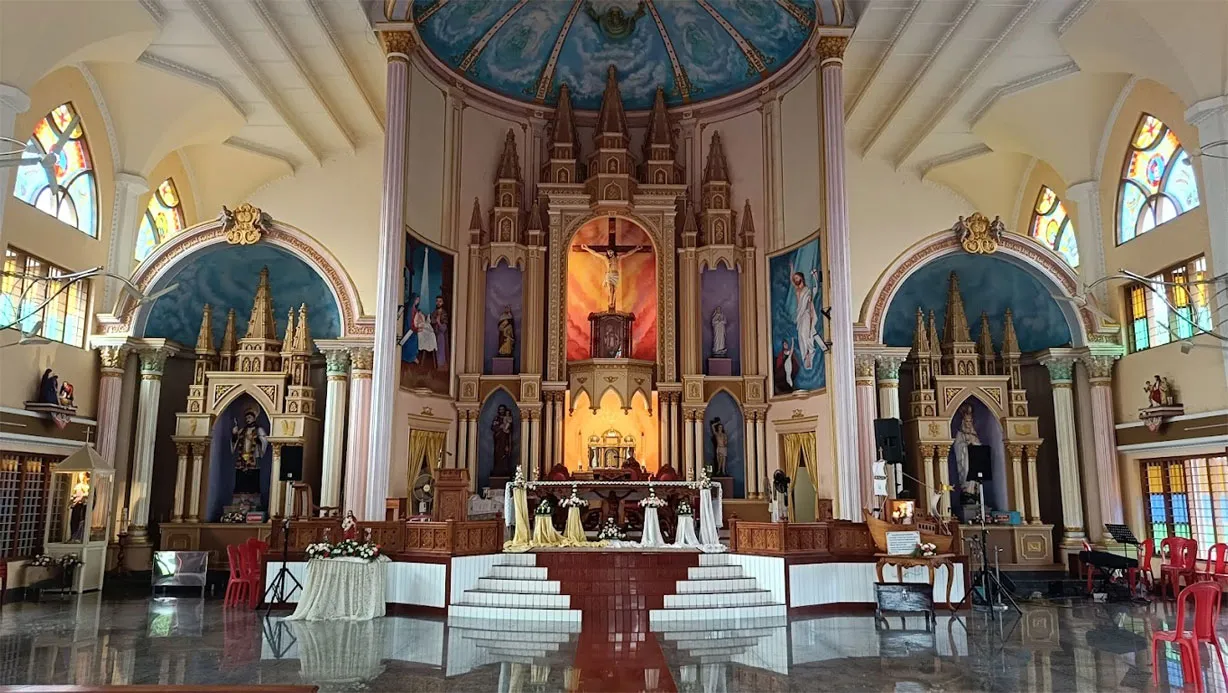
It was to the St. Paul’s Seminary in Sampaloor, the German Jesuit priest and missionary, Johann Ernst Hanxleden, better identified as Arnos Pathiri, came after his novitiate studies in Goa. While continuing his ecclesiastical studies, Pathiri studied Sanskrit and Malayalam while staying at Sampaloor and was ordained as a priest at this church. The church was destroyed during the invasion of Malabar by Tippu Sultan in 1781, and a new church was constructed in its place by Bernadian Bechinelly, the then vicar apostolate of Varapuzha in 1862 which was renovated twice, in 1893 and 1970 and the present church getting consecrated on 2 December 1979.
The church complex, besides St. Paul’s seminary, is home to St. Paul’s Press and St. Paul’s Monastery and it was at this press which was established in 1663, many of the early publications of Jesuit priests in the area were printed, including the first text in Malayalam. The church premises also hold two museums, Historicum Museum and Anglo-Indian Cultural Museum and several exhibits such as cannon balls used by Tippu Sultan during the invasion, lamps, vestments, tablets and statues are displayed in these museums.
Saint Francis Xavier
He insists that on a certain occasion Xavier, by the sign of the cross, made sea-water fresh, so that his fellow-passengers and the crew could drink it; that he healed the sick and raised the dead in various places; brought back a lost boat to his ship; was on one occasion lifted from the earth bodily and transfigured …
Overview. Sampaloor, the place where the church is located, had a number of missionary visitors in its history, starting with Francis Xavier, who visited the village first in 1542, followed by two more visits in 1544 and 1548.
Annual Feast Day
Feast day: December 3rd
The feast day of St. Francis Xavier, celebrated at St. Francis Xavier’s Church in Sampaloor, typically falls on December 3rd
Mass Timing
Saturday 5:00 pm
Sunday 8:00 am, 10:00 am, & 6:00 pm
Weekday Mass Monday, Tuesday, Thursday, and Friday Communion Service on Wednesdays 8:00 am
Contact Info
St . Francis Xavier’s Church, Sampaloor,
779W+GMM, Palayamparambu Rd,
Vynthala,
Kallur Vadakkummuri,
Kerala 680731,
India.
Phone No.
Tel : +91 480 2719079
Tel : +91 9846229057
Accommodations
Connectivities
Railway
Chalakudy railway station to St. Francis Xavier’s Church, Sampaloor Distance 13 min (7.0 km) via Ashtamichira Chalakudi Rd/Chalakudi Mala Rd.
Airway
Cochin International Airport to St. Francis Xavier’s Church, Sampaloor Distance 40 min (23.0 km) via Ashtamichira – Annamanada Rd

